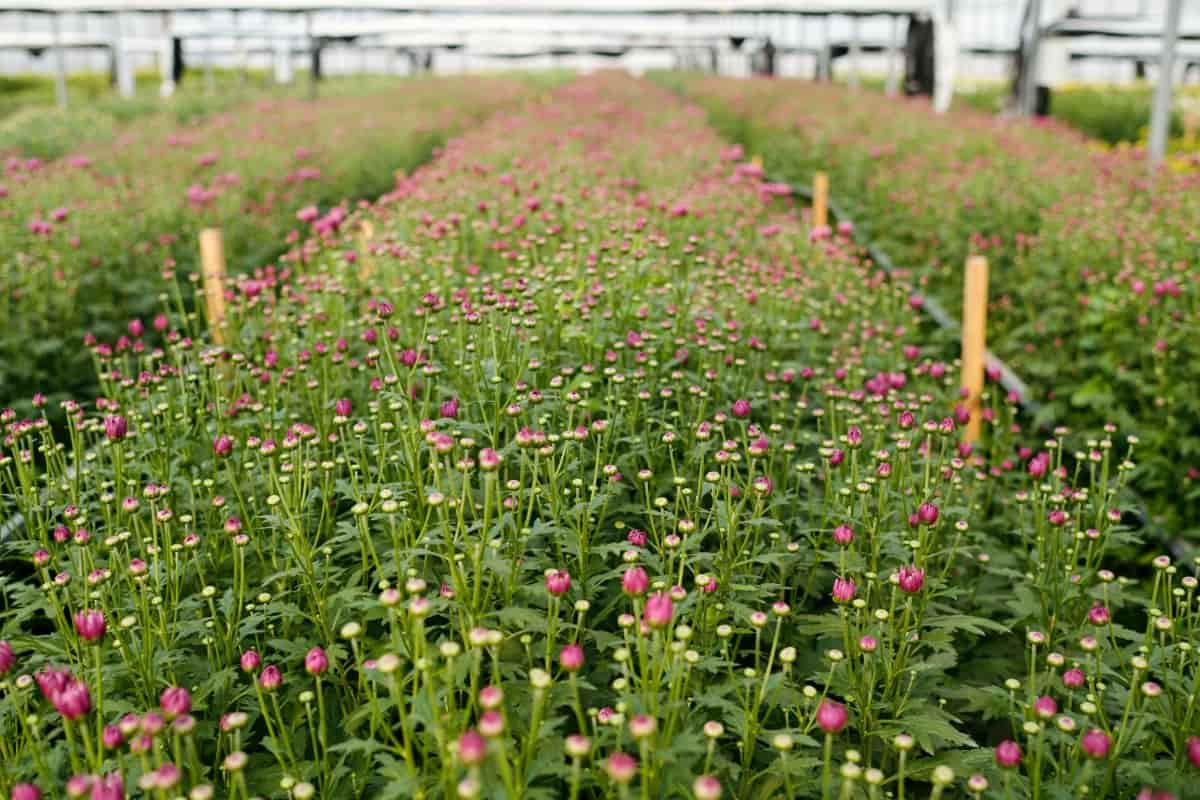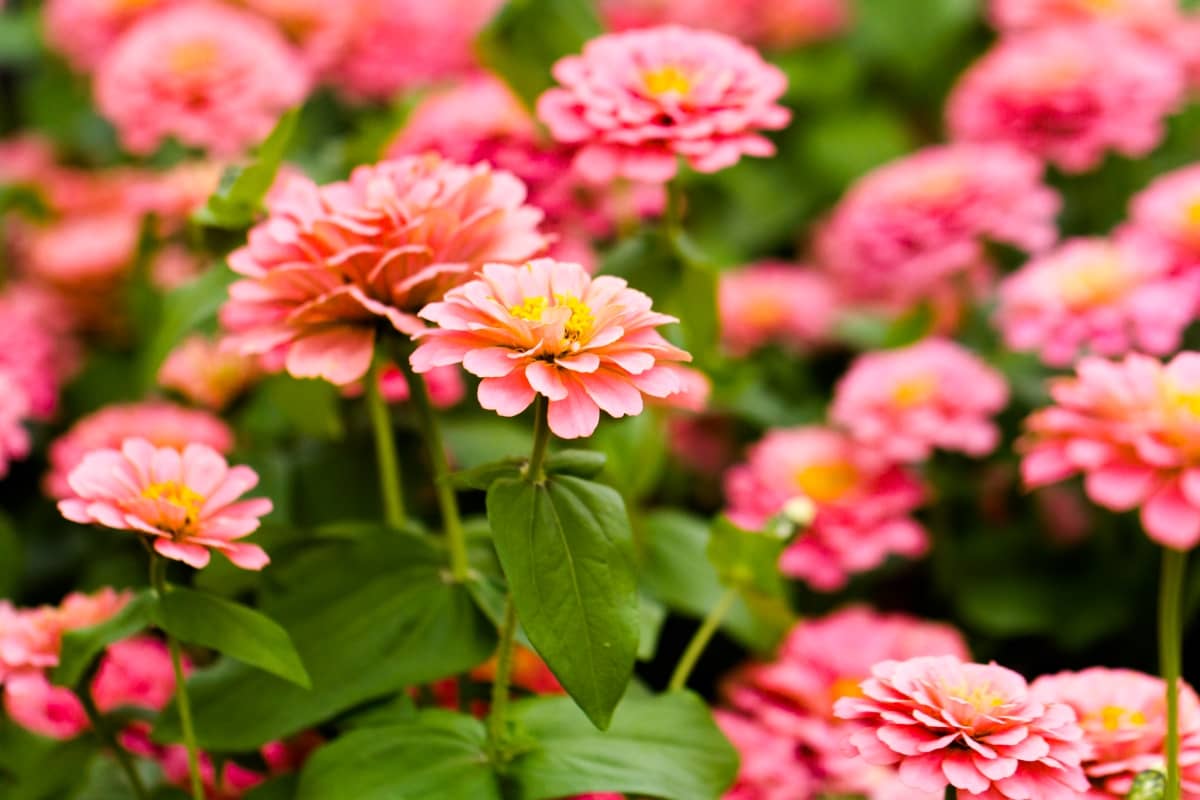Maximizing blooms in your flowering plants is a goal many gardeners strive for. With the right knowledge and approach, you can achieve a stunning display of colors that will elevate your outdoor space. Flowering plants rely on the right balance of nutrients to produce vibrant blooms. Garden bloom optimization is every flower enthusiast’s dream. It’s the art of ensuring your plants are producing an abundance of beautiful blooms.

NPK Ratio for Flowering Plants
Overview of N-P-K Ratios
Understanding N-P-K Fundamentals
N-P-K stands for Nitrogen, Phosphorus, and Potassium – three essential nutrients that play crucial roles in plant growth and development. Nitrogen promotes green foliage and overall plant growth. Phosphorus helps in flower production. Potassium helps with overall plant health.
Importance for Flowering Plants
Each element in the N-P-K ratio plays a crucial role in supporting different plant aspects, especially during the blooming stage. By understanding the importance of each nutrient component and how they work together, gardeners can ensure that their flowering plants receive the necessary support for robust blooming cycles year after year.
Decoding the N-P-K Ratio
Nitrogen (N): Growth and Foliage
Nitrogen is essential for plant growth and foliage development. Nitrogen (N) is a vital nutrient for flowering plants, playing a key role in promoting growth and enhancing foliage. Plants require nitrogen to produce chlorophyll, the pigment responsible for photosynthesis. Finding the right balance is important for maximizing blooms while maintaining overall plant health.
Phosphorus (P): Root Development and Blooms
Phosphorus, represented by the letter P in the N-P-K ratio, plays a crucial role in root development and blooming for flowering plants. It is like the hidden hero beneath the soil, working its magic to ensure strong roots that support vibrant blooms. In addition to supporting robust roots, phosphorus also contributes significantly to flower production.
Potassium (K): Overall Plant Health
Potassium, represented by the symbol K in the N-P-K ratio, plays a crucial role in ensuring overall plant health. Additionally, potassium is vital for flower production and quality. It influences factors such as color intensity, size of blooms, and overall aesthetic appeal of flowering plants.
The Ideal N-P-K Ratio for Flowering Plants
Recommended Ratios for Blooms
For maximizing blooms, a higher phosphorus (P) content is crucial as it promotes root development and flower production. Look for nutrients with a higher middle number in the N-P-K ratio on your fertilizer label. A recommended balanced N-P-K ratio for blooming plants of 10-30-20 or even 5-10-5 during the flowering season. This ensures that your plants receive adequate nutrients to support healthy growth and vibrant blooms.
Variations by Plant Type
Different flowering plants have unique needs when it comes to N-P-K ratios. Each plant type has its preferences when it comes to N-P-K ratios, so it’s essential to tailor your fertilizer mix accordingly.
Organic vs. Synthetic N-P-K Fertilizers
Benefits and Drawbacks
Organic fertilizers are natural sources like compost, manure, or bone meal. They provide a slow release of nutrients that benefit the soil structure in the long run. Alternatively, synthetic fertilizers are chemically formulated for fast plant uptake but may lack beneficial soil microorganisms found in organic options. While synthetics offer a quick nutrient boost for immediate growth and blooms, they can also lead to nutrient runoff and harm beneficial insects.
Choosing the Right Type for Your Garden
When it comes to choosing the right type of fertilizer for your flower garden, there are a few key factors to consider. Organic fertilizers provide slow-release nutrients that benefit the soil’s overall health. On the other hand, synthetic fertilizers are quick nutrient boost but may have environmental drawbacks in the long run. Finding the right balance between organic and synthetic fertilizers for flower plants based on your gardening goals is essential for achieving vibrant and healthy plants in your garden.
In case you missed it: How to Make Homemade Fertilizer for Polyhouse Crops: A Comprehensive Guide for Beginners

How to Apply N-P-K Fertilizers
Timing and Frequency
It’s important to understand the nutrient needs of your flower plants throughout their growth stages. Early spring is an ideal time for initial fertilization, providing a nutrient boost as they enter their active growing phase. Avoid over-fertilizing by following recommended guidelines and observing plant responses. Remember that different types of flowering plants may have varying fertilizer needs, so tailor your application accordingly.
Application Methods for Optimal Absorption
One effective application method for flowering plants is foliar feeding, where you spray the fertilizer directly onto the leaves for quick absorption. This can be beneficial during periods of rapid growth or when plants are struggling to uptake nutrients from the soil. Another popular method is root drenching, where you apply the fertilizer to the soil around the plant’s roots. For potted plants, incorporating slow-release fertilizers into the potting mix can provide a steady supply of nutrients without frequent applications.
Customizing N-P-K Ratios for Specific Flowers
Roses, Tulips, and Daffodils
Roses, known for their vibrant colors and fragrant blooms, thrive with a balanced N-P-K ratio for Roses of 5-10-5. This blend promotes healthy root development and abundant flower production. Tulips benefit from a balanced N-P-K ratio for healthy growth and flowering. Tulips, with their elegant beauty and diverse hues, prefer an N-P-K ratio of 9-6-6. Daffodils prefer a slightly higher potassium content to support overall plant health. To enhance daffodil growth and bloom size, aim for an N-P-K ratio of 5-10-10.
Adjusting for Annuals and Perennials
Annuals typically have a shorter lifespan and require more immediate nutrients to support their growth and blooming cycles. On the other hand, perennials have a longer growth period and may benefit from a slower-release fertilizer to sustain them over time.
The Role of Soil Testing in N-P-K Application
How to Test Your Soil
Soil testing is a crucial step in maximizing blooms for your flowering plants. By understanding the soil nutrient levels, you can tailor your N-P-K fertilizer application to meet the specific needs of your plants. To test your soil, start by collecting samples from different areas of your garden or flower beds. Mix them and send a sample to a reputable soil testing lab for analysis.
Adjusting Fertilization Based on Soil Needs
Soil plays a main role in finding the nutrient needs of your flower garden. It’s essential to adjust your fertilization strategy based on the specific requirements of your soil. If soil is deficient in some nutrients, you can supplement with targeted fertilizers to address these deficiencies. On the other hand, if certain nutrients are already present in excess, you can adjust your fertilizer application accordingly to avoid overloading the soil.
Watering Practices with N-P-K Fertilizers
Ensuring Effective Nutrient Uptake
Watering too soon can wash away the nutrients before they have a chance to be absorbed by the roots. Water in the morning or evening when temperatures are cooler to minimize evaporation and ensure that moisture reaches the plant’s roots. Monitor soil moisture levels regularly and adjust your watering schedule accordingly.
Avoiding Over-fertilization and Nutrient Runoff
Over-fertilization can do more harm than good to your flowering plants. Excessive fertilization can disrupt the delicate balance of soil nutrients, leading to nutrient imbalances that affect plant health. To avoid over-fertilization, always follow the recommended dosage instructions on the fertilizer packaging.
Common Mistakes in Using N-P-K Fertilizers
Overuse and Its Consequences
One common mistake gardener makes when using N-P-K fertilizers for flowering plants is overusing them. While nutrients are important for plant growth, too much of a good thing can harm your plants. Over-fertilization of the flowering plants can lead to nutrient imbalances in the soil, causing issues like stunted growth or even plant death. Moderation is important when it comes to feeding your flowering plants for maximum blooms.
Signs of Nutrient Imbalance
It might be a sign of nutrient imbalance. Yellowing leaves, stunted growth, or leaf discoloration could indicate that your flowering plants are not getting the right balance of nutrients they need to thrive. On the other hand, if your plants have weak stems and pale leaves, they might lack essential nutrients like nitrogen or potassium.
In case you missed it: 8 Best Fertilizers to Increase Tomato Fruit Size, Yield, and Taste

Advanced Tips for Maximizing Blooms with N-P-K
Incorporating Compost and Mulches
Compost is a powerhouse of nutrients that can enrich the soil, providing essential elements for healthy plant growth. Mulching with shredded leaves or straw adds an extra insulation layer against harsh weather conditions while promoting healthy root development for abundant blooms.
Seasonal Adjustments for Flowering Plants
Adjusting N-P-K ratios for flower plants based on the time of year can make a significant difference in maximizing blooms. During the spring and summer seasons, when flower plants are actively growing and blooming, a higher phosphorus ratio can promote root development and flower production. In fall, as plants prepare for dormancy, reducing nitrogen levels helps prevent new growth that could be damaged by frost.
In case you missed it: Top 10 Best Fertilizers for Cherry Trees: How and When to Apply

Conclusion
To maximize blooms, it’s essential to understand the needs of your plants. Consider using a good quality fertilizer with the right N-P-K ratio for blooming plants. This will provide essential nutrients to support flower production and overall plant health. Nutrient balance for flowering is crucial to ensure your plants reach their full blooming potential.
- Feed Your Flock for Less: Top 10 Tips to Save on Chicken Feed
- Ultimate Guide to Ossabaw Island Hog: Breeding, Raising, Diet, and Care
- Hatching Answers: The Top 10 Reasons Your Chickens Aren’t Laying Eggs
- Eggs and Economics: Breaking Down the Cost of Raising Backyard Chickens
- Defend Your Greens: Proven Methods to Keep Iguanas Out of Your Garden
- Ultimate Guide to Cinnamon Queen Chicken: A Comprehensive Guide for Beginners
- Ultimate Guide to California Tan Chicken: Breeding, Raising, Diet, Egg-Production and Care
- Ultimate Guide to Marsh Daisy Chicken: Breeding, Raising, Diet, and Care
- 10 Types of Chicken Farming Businesses You Can Start for Profits